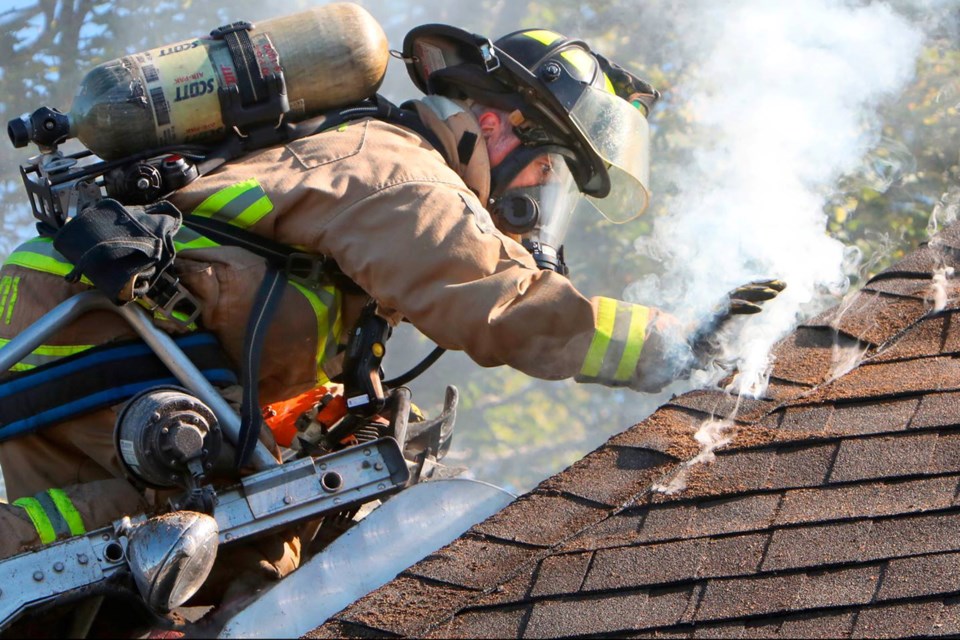If you were once a young kid wanting to be a firefighter when you grow up but never went down that path, now is your chance to get that dream back on the rails.
Brent Thomas, who is the fire chief with Innisfil Fire and Rescue Services, as well as the joint fire chief with Bradford West Gwillimbury Fire & Emergency Services, spoke with InnisfilToday about the current hiring campaign.
“We got permission through our budget process (in Bradford) to add 20 firefighters, or another full crew of firefighters, which is 20 people with five people on each shift,” said Thomas.
A second crew is a huge benefit to the community, he added, because it means the fire services will meet its requirements for the level of service that Bradford council has set for them with the staff that they need to do it.
“We’re doing a bit of a staggered recruitment. We’re doing 12, tentatively set for July, with the other eight around the first of January,” Thomas said.
The local chief has been a full-time firefighter since 1995, and in the emergency services before that as a paramedic, beginning in 1985. The sector has seen momentous change since Thomas first joined as a firefighter, beginning with the hiring process itself.
The hopeful new recruits must do their pre-screening, with medical and agility-styled testing, as well as psychological testing, through a third-party organization. Once that's complete, there is an interview process, which is happening in a couple of weeks. And from there the selection process begins.
The skyrocketing number of changes in the science of building construction and materials has a huge impact on firefighters old and new.
“That is part of the training that we do," Thomas said. "We’ve done a good job on responding to and taking into account the changes to the (building construction) industry."
Lithium battery fires, for example, are a game-changer for the fire service.
“As things advance, there’s stuff that we haven’t even thought of that is out there being worked on that will definitely impact us and we are early into the planning stages so that we can change how we do things and respond to it, and to react to it from a training perspective, so that our people are prepared to respond to those types of emergencies as they come,” Thomas said.
“Solar panels have been around for a while and you can’t turn the sun off, so we are looking at different ways and means to deal with things like thermal runaway," he added. "And with electric vehicles, we can’t stop the power from producing itself of shorting out.
"How we respond to be able to reduce the heat without causing an environmental problem with lots of water and runoff is something that is ever-evolving, and how do we do this compared to our old just-pour-water-on-it type of thing.”
Battery technology is not only something they may have to battle with when there is a fire, the tech is something that the department hopes to embrace.
“With the battery technology that is out there, reducing the amount of gasoline-powered tools or generators to electric, is environmentally responsible, and is something that we are looking at," Thomas said.
"There is technology for an electric fire truck now, and we are keeping an eye on those sorts of things. Cost is an issue. It’s first-generation."
Materials and fire are not the only things new recruits will need to learn about. People in the community stretch the limit when it comes to their play-time now, which can get them into trouble at times.
“There is a lot more recreation and extreme recreation (in the area), which means when they get into trouble, we have to be able to help them," the chief said. "The requirements for rescue and specialty rescue have changed, so that is added to our crew training."
Staying ahead of the game, so to speak, is key to training success, which helps to ensure, as best they can, the safety of new recruits and older veterans.
“We did meet provincial requirements for firefighter ability and what they are required to do. Just recently, the fire marshal’s office brought in new mandatory certifications, which we were already doing, but now it’s just official that we do that. That reflects on just how many hours we train people before we put them out there and be 'road-ready' to respond," Thomas said.



